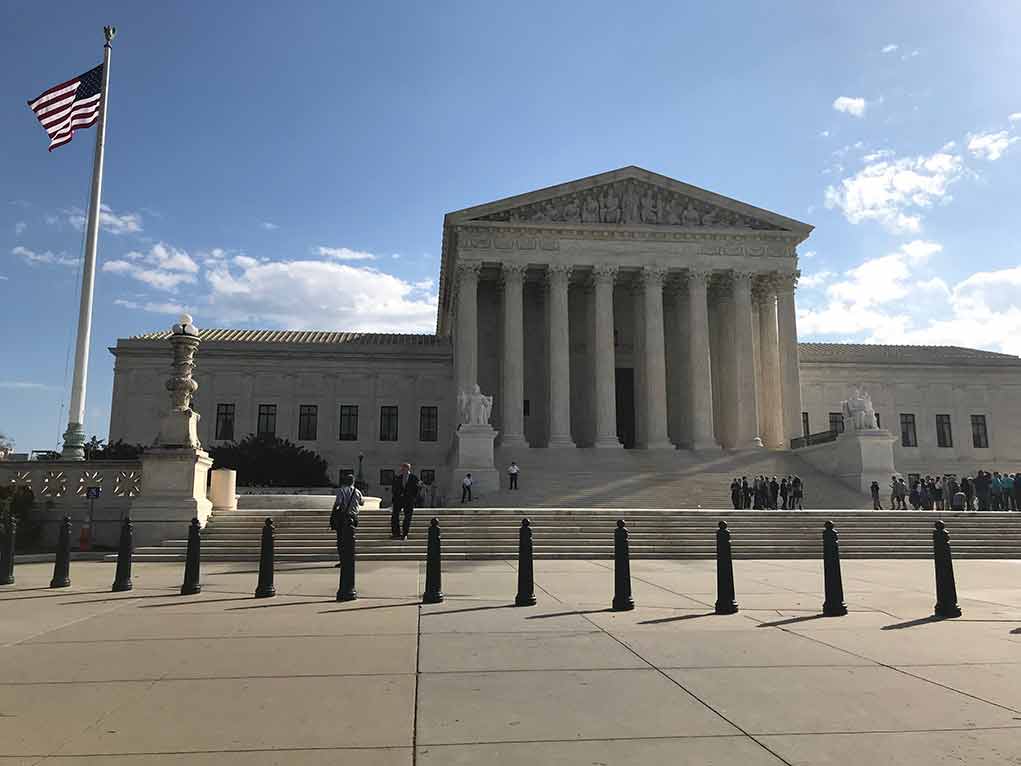
The Supreme Court deals a crushing blow to environmental activists with a unanimous ruling that limits burdensome reviews, paving the way for faster infrastructure development across America.
Key Takeaways
- The Supreme Court ruled 8-0 that federal agencies only need to assess direct environmental impacts of projects, not upstream or downstream effects.
- This decision streamlines the approval process for infrastructure projects like highways, railways, and pipelines by limiting the scope of environmental reviews.
- The ruling overturned a D.C. Circuit Court decision that had blocked an 88-mile railroad project in Utah intended to transport crude oil.
- Justice Brett Kavanaugh emphasized that NEPA is a procedural statute and should not serve as a roadblock to infrastructure development.
- Environmental groups see this as a significant setback, while industries including oil, gas, and mining celebrate the reduction in regulatory hurdles.
Supreme Court Unanimously Narrows NEPA’s Scope
In a decisive victory for infrastructure development, the Supreme Court has unanimously ruled to limit the scope of environmental reviews required under the National Environmental Policy Act (NEPA). The 8-0 decision (with Justice Neil Gorsuch not participating) overturned a lower court ruling that had required federal agencies to consider upstream and downstream environmental effects when approving projects. This landmark ruling significantly streamlines the environmental review process for major infrastructure projects across the United States, marking a substantial win for President Trump’s agenda to reduce regulatory burdens on American industry.
The case centered on an 88-mile railroad project in Utah’s Uinta Basin designed to transport crude oil to refineries in Texas and Louisiana. The Surface Transportation Board (STB) had approved the project in 2021 after conducting extensive public meetings and producing a 3,600-page environmental impact statement. However, the D.C. Circuit Court vacated this approval, arguing that the STB failed to consider downstream environmental effects, such as potential increases in oil production and the impacts of burning more fossil fuels.
Justice Kavanaugh Delivers Clarity on Environmental Review Requirements
Writing for the majority, Justice Brett Kavanaugh delivered a clear message about the proper interpretation of NEPA’s requirements. “The Surface Transportation Board did not need to evaluate potential environmental impacts of the separate upstream and downstream projects,” wrote Justice Kavanaugh, establishing a more focused approach to environmental reviews. His opinion emphasized that federal agencies should only be responsible for examining the direct environmental impacts of projects under consideration, not the broader potential consequences that might occur elsewhere in the supply chain.
“The proper judicial approach for NEPA cases is straightforward: Courts should review an agency’s EIS to check that it addresses the environmental effects of the project at hand. The EIS need not address the effects of separate projects,” said Justice Brett Kavanaugh, in the majority opinion.
Kavanaugh further instructed courts to “afford substantial deference” to federal agencies in their environmental reviews, signaling an end to the judicial micromanagement that has plagued infrastructure development for decades. This guidance aims to prevent courts from second-guessing agency decisions that fall within a reasonable scope of interpretation, potentially reducing the effectiveness of lawsuits that have historically been used to delay or block critical infrastructure projects.
Mixed Reactions from Legal Experts and Stakeholders
While the ruling has been celebrated by industry groups and conservatives as a common-sense limitation on regulatory overreach, some legal experts have expressed concern about the departure from decades of environmental law precedent. Harvard Law Professor Richard Lazarus criticized the decision, suggesting it represents a significant shift in environmental policy rather than a mere correction of legal interpretation.
“They did a major cutback,” said Richard Lazarus, Harvard Law Professor. “Right or wrong, that’s not been the NEPA law for 50 years.”
Industry representatives, however, have applauded the decision for its potential to reduce costly delays in project approvals. “This ruling will promote more efficient and effective NEPA review for countless projects across the country,” said lawyer Hadassah Reimer, highlighting the potential for increased efficiency in infrastructure development. The decision could significantly reduce the average 4.2-year delay that NEPA litigation has historically added to project timelines, potentially saving billions in costs and accelerating much-needed improvements to America’s aging infrastructure.
Implications for Future Infrastructure Development
This ruling represents a significant victory for the Trump administration’s ongoing efforts to streamline regulatory processes and boost American energy independence and infrastructure development. By limiting the scope of environmental reviews, the decision reduces the regulatory burden on critical projects ranging from highways and bridges to pipelines and energy facilities. The impact could be particularly beneficial for fossil fuel projects that have often faced the most stringent scrutiny under expanded NEPA interpretations, though clean energy initiatives should also benefit from faster approvals.
The decision effectively reinforces what many conservatives have long viewed as regulatory overreach by environmental activists who have weaponized NEPA to block development projects they oppose on ideological grounds. By restricting the ability of courts to expand NEPA’s requirements beyond their statutory foundation, the Supreme Court has provided clarity that should result in more predictable project timelines, reduced costs, and accelerated infrastructure development across the United States.

















